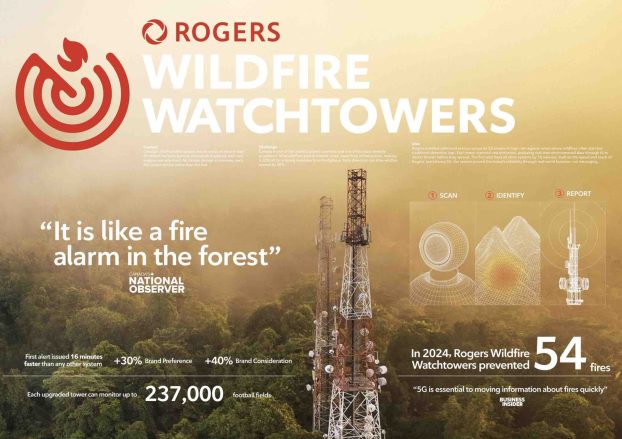For all practical purposes, outdoor advertising has been around just about as long as commerce itself. Ever since people began selling stuff, after all, they’ve been putting up signs to broadcast the fact.
It’s fair to say, however, that in the recent past the business has grown just a teeny bit more complex. (Though the archaeological record is vague on this point, one can safely assume that GRPs and proof-of-performance didn’t become major areas of concern until the tail end of the last millennium.)
What challenges and opportunities, then, confront Canada’s outdoor industry as it stands at the dawn of a new year, a new decade and a new century? For this report, Strategy put the question to a number of the leading players in the business.
These Are The Good Times
Bullish. That, in a word, sums up the general view on the outdoor industry’s current health. In the course of the past five years, sales have increased an estimated 80%, to approximately $260 million a year. And new categories of advertiser – in particular, the rapidly proliferating dot-com enterprises – are discovering outdoor.
‘I can’t think of another time when this medium has seen such demand,’ says David Woods, president of Toronto-based Pattison Outdoor. ‘And the demand is coming from all product categories.’
‘We’re definitely in a growth phase,’ agrees Ron Hutchinson, president of Toronto-based Urban Outdoor Trans Ad. ‘The medium’s very hot. There are lots of new customers buying from us, and a tremendous expansion of the inventory.’
So what’s driving the growth?
Theories abound. The explanation most commonly heard, of course, is that fragmentation in other media – television, most particularly – is driving more advertisers into the one medium that still delivers mass reach with reasonable efficiency.
‘Television is much more targetable than it used to be 10 or 15 years ago, but it just doesn’t provide the same kind of coverage [for the price],’ says Alan High, principal of Eller Media Company Canada in Toronto.
At the same time, the outdoor industry has succeeded in overcoming many of the credibility problems that dogged it back in the 1980s.
Much of the credit for that belongs to the Canadian Outdoor Measurement Bureau (COMB), an independent organization consisting of advertisers, agencies and outdoor operators, which provides traffic circulation data for various out-of-home products, and operates a proof-of-performance audit system for the industry. COMB’s efforts, it’s generally agreed, have provided a degree of accountability and raised the overall comfort level of clients.
Individual operators, meanwhile, have made considerable strides in improving the delivery of the product. ‘It’s on the streets in much more timely fashion, and the quality of production is much better,’ says High. ‘It used to be that you’d buy a mural in Toronto and it would look great – but you’d go to Winnipeg or someplace, and it would look lousy. Consistency of presentation was a big problem that doesn’t exist anymore.’
In addition, there’s a new generation of creative and media professionals today who seem to have a better understanding of the medium than their counterparts of a decade ago. High, for one, ascribes this in large part to the efforts of Toronto-based Mediacom, which invested heavily in business development initiatives during the mid-1980s, when many of these people were just getting their start in the advertising business.
‘Mediacom was out there preaching the gospel of outdoor to young media buyers and creatives,’ he says. ‘Those people are in their thirties now, and it’s coming home to roost. Back in the 1980s, creative people always struggled with outdoor. I think now they’re more willing to take a shot at it and try to do something spectacular.’
Why Can’t We Be Friends?
So media and creative people love the medium, advertisers trust it to deliver reach, and revenues are, as a consequence, soaring. Everything, it seems, is coming up roses. Guess that pretty much wraps up the story, right?
Well, not exactly.
Even as they wax ecstatic about sales growth, outdoor operators point with dismay at the industry’s relatively narrow slice of the advertising pie. Generous estimates put outdoor’s share of the yearly ad spend in Canada at around 5% – a far cry from the 10%-15% or more that it enjoys in some European countries.
‘Total sales for the industry in Canada are still less than what’s spent on TV in Montreal alone,’ notes Robert Leonard, executive vice-president of Montreal-based Omni Canada.
What’s more, the competition for that share of spending has increased significantly in the last two years, as new players – most of them U.S.-based – have entered the fray. Among them: Eller Media (which is spearheading Toronto’s high-profile Dundas Square project), Obie Media (which has been aggressively pursuing transit contracts throughout Canada) and Transportation Displays Inc. (which won the lucrative Toronto Transit Commission contract in November).
While no one in the business would dare to suggest that competition is anything but desirable, there are those who suspect it may be possible to have too much of a good thing.
Some, for example, fear heightened competition will lead to more and more heavy-duty discounting, ultimately shifting the industry’s emphasis toward pricing – at the expense of quality.
Newcomers to the marketplace also have a natural tendency to bid aggressively for site leases and franchises in their efforts to establish a toehold, says Mediacom president Brian McLean. And that serves to drive up operating costs for all the players on the field. (Indeed, one outdoor operator reports that his lease costs increased 20% in the course of the last year alone.)
‘It catches up with you over time,’ McLean says. ‘As an operator, you can’t increase your rates commensurate with your lease costs every year, because advertisers are just going to balk at that.’
‘It’s really just a case of the industry beating up on itself,’ agrees Leonard. ‘Because the only winners are the landlords.’
Now, if you’ve got more folks fighting over that little slice of pie, the obvious solution is to cut a bigger slice – to expand outdoor’s share of the dollars spent on advertising in this country. And indeed, most of Canada’s top outdoor operators acknowledge the need for a more concerted business development effort on the part of the industry as a whole.
‘As outdoor operators, we should be able to sit down together and show advertisers and clients that a larger portion of their TV and radio and print investments should be put aside for outdoor, because outdoor works,’ Leonard says.
By rights, that responsibility falls to the independent body charged with representing the overall interests of the industry. Unfortunately, the Outdoor Advertising Association of Canada (OAAC) has been largely dormant since the Pattison group pulled out of it in 1997 – a move generally attributed to a combination of interpersonal and competitive conflicts. At this point, the OAAC’s only notable activity is organizing the industry’s annual awards show, the Billis (which are scheduled to take place this year on Feb. 24).
‘I would call it a virtual association now,’ says Eller’s Alan High. ‘It doesn’t exist in any real form. You need the key people in this industry all supporting the vision of where outdoor must go. And I don’t think you’ve got that right now.’
Many would like to see that change.
‘When you’re only getting 5% of the ad dollars, you’re very vulnerable – unless you stick together elbow to elbow and fight for the industry as a whole,’ Leonard says. ‘We need an evangelist. A neutral body – not someone from Omni or Mediacom or Pattison or Urban Outdoor – that will go to agencies and say, ‘Listen guys, you should be doing outdoor.’ After that, let the various companies fight it out on the street for the buy.
‘If radio, with hundreds of different stations and owners, can do that through the Radio Marketing Bureau, how come our industry – with just four major outdoor operators – can’t do it?’
Pattison, however, shows no sign of changing its mind about OAAC membership. According to Woods, the company is quite content to see the industry’s interests represented by COMB – an organization that he says enjoys a great deal more credibility, since it includes representatives from the client and agency side as well.
Granted COMB isn’t really set up to act as an ‘evangelist’ for outdoor. But then, Woods isn’t convinced that the industry needs one. After all, the two largest players – Mediacom and Pattison – are already out there beating the drum on their own behalf. And their efforts inevitably raise the profile of the industry as a whole. ‘We seem to be doing a pretty good job just on our own,’ he says.
To Boldly Go…
Whether operators approach it individually or collectively, sustaining growth is unquestionably one of the greatest challenges confronting the outdoor industry. Where will the new opportunities come from?
Some see the increasing financial pressure on municipalities working to the industry’s advantage, opening the door for the introduction of a variety of new products.
As provincial governments offload more and more costs onto their local counterparts, municipalities have become increasingly hungry for ways to save themselves money, Mediacom’s Brian McLean says. As a consequence, many are now looking to outdoor companies to assume the cost of providing and maintaining waste receptacles, pedestrian shelters and other ‘street furniture’ – in exchange, of course, for the right to sell the accompanying advertising faces. (Concord, Ont.-based OMG Media, for example, has recently contracted to provide waste and recycling bins for the City of Toronto, working in partnership with Urban Outdoor, which will handle both local and national advertising sales.)
‘This sort of thing is a great win-win for the cities,’ McLean says. ‘All of those things we could be doing for municipalities to save them money have an important place in our future. We need to make sure we have a strong menu of such things for the municipalities.’
Omni’s Robert Leonard, however, counsels caution when proceeding in this direction. The more advertising vehicles are added to the streetscape, he warns, the greater the risk that outdoor will come to be perceived as ‘visual pollution.’
‘Outdoor is an advertising medium, not a way for cities to handle their funding problems,’ he says. ‘Suddenly, everybody wants to slap an advertising face on every available space, and to me that’s not good for the industry.’
New technologies, of course, are also leading to new product innovations. Advances in LED technology, for example, have in recent years made possible the development of large-scale boards displaying full-colour video images. Examples can now be found in both Montreal and Toronto. Canada’s biggest outdoor LED display, in fact, was just installed by Pattison at Toronto’s high-traffic Bloor-Yonge intersection in December (see sidebar, this page).
Many more such boards can be expected to appear in the future, as advertisers begin to appreciate the potential impact of full-colour video in outdoor, predicts Brian MacDonald, president of The Pixelboard Network in Toronto. And as they proliferate, the issue of responsible use will become an increasing concern.
By its very nature, video imagery is more distracting than either static signage or an electronic message board, he explains. And anything capable of diverting a driver’s attention for more than a few seconds poses a risk – however slim – to traffic safety. So it’s up to the outdoor operators to ensure that advertising messages on video boards do not exceed optimal length.
‘I don’t even like to think about this, but if video ever did become the cause of an accident, it would be a devastating blow to our entire industry,’ MacDonald says. ‘There has to be a high degree of responsibility exerted on our part, not to let the technology be used in dangerous ways.’
While technology marches inexorably forward, and competitive circumstances evolve as the economy does, the basic issues confronting the outdoor industry remain essentially unchanged. In the end, it’s still about delivering the best service to advertisers at the best price.
‘We have a much more competitive environment today, which forces everybody in the industry to raise their standards,’ Alan High says. ‘But if you’d asked me 15 years ago, I would have said the same thing about the challenges. We have to do things better and faster – to give the advertiser a superior product in a more timely manner.’
Also in this report:
– Billy Bee boards create a buzz p.23
– Video Board a standout: Largest of its kind in Canada, board will showcase DaimlerChrysler, TV spots for next five years p.25




























